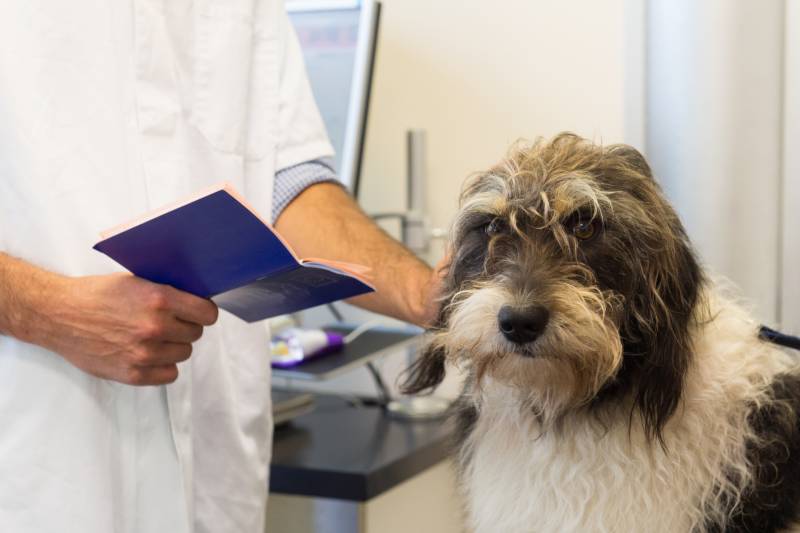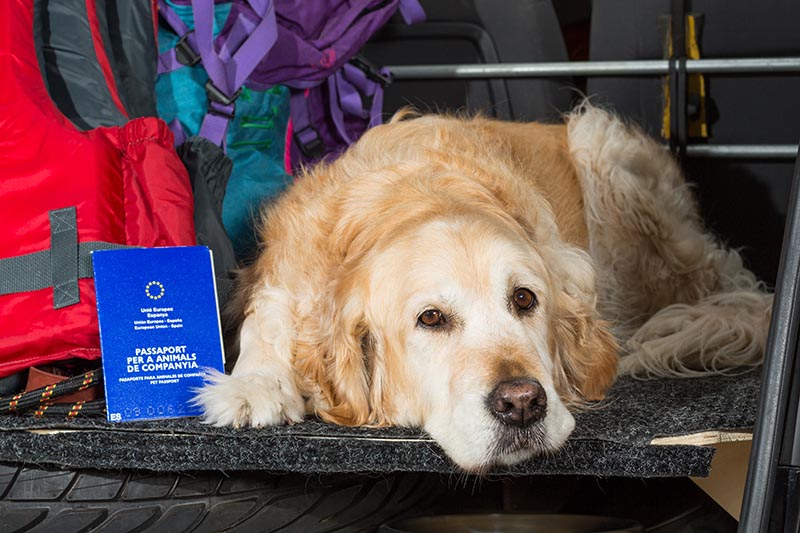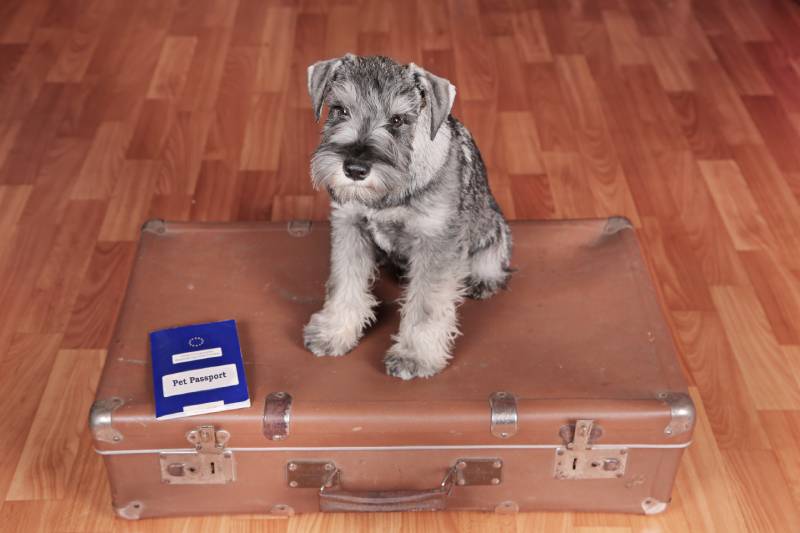Traveling is known to be a pretty stressful event, but it is also one of the most exciting parts of your life! All of the organizing and packing and ensuring you have all of your documentation in order is essential but time-consuming.
And if you plan on taking your pet with you, that’s even more organizing and ensuring you have all of the right permits and documents.
If you’re traveling from Canada to another country, you’ll want to keep reading to learn what you’ll need to successfully bring your pet with you.
The 4 Steps to Obtain a Pet Passport When Traveling Out of Canada
First of all, Canada actually doesn’t have a pet passport, but there are a few documents you’ll need for your pet before traveling. The following are the steps you should take to ensure you can bring your pet with you outside of Canada.
1. It Starts With Researching
You should start by contacting the embassy of your destination country to inquire what the regulations are for bringing pets into their country.
Each country has its own rules, so it’s essential that you make yourself familiar with them before leaving.
And bear in mind that you’ll be paying for vaccines, treatments, and testing before entering the country. Some countries may also require an export certificate and import permit.

2. Make an Appointment With Your Veterinarian
Many countries will accept the Canadian International Health Certificate,1 which should be printed on legal-sized paper (8.5 x 12”), but letter-sized (8.5 x 11”) is also acceptable.
This certificate must be filled out by a licensed veterinarian and then mailed to or dropped off at the closest Canadian Food Inspection Agency (CFIA). There it is endorsed by a CFIA vet and will cost you $20.
You won’t need this certificate if your destination country provides its own health certificate or requires specific veterinary certificates with the CIFA.
3. Exam and Vaccinations While at the Veterinarian
While with the veterinarian to have the Canadian International Health Certificate filled out, you’ll likely have to pay for their time, which will include a physical exam. And if your pet needs to have their vaccines updated, your vet will take care of this at this time.
Additionally, if your pet isn’t already microchipped, you should probably have that done as well. It will give you peace of mind if your pet is lost while traveling, but some countries require pets to be microchipped.

4. Rabies Neutralizing Antibody Titre Test
Some countries, particularly Australia, will request the rabies neutralizing antibody titre test (RNATT). This tests the pet’s blood to detect the level of rabies antibodies. Your vet will draw the blood, centrifuge it to obtain serum, and send it to a qualified laboratory.
If you’re going to Australia, Canadians have the blood serum sent to Kansas State University in the United States. There’s an $84 charge for the lab work.
How to Obtain a Pet Passport When Traveling Into Canada
Traveling to Canada also requires specific documentation.
1. Research Canada’s Import Rules
If you’re flying into Canada, you’ll want to check the import rules for bringing your pet into the country. Without the proper documentation, your pet will be removed from Canada.
Pets entering Canada will need a rabies vaccination certificate or a health certificate completed by a licensed veterinarian. An EU Pet Passport will be accepted if you live in a rabies-free country.2
If you’re using a veterinary certificate, you should also have documentation that states rabies has not occurred in your country for at least six months before your pet enters Canada.

2. Research Online
The Government of Canada has made things easier for you by providing a question-and-answer section.3
This allows you to answer a few questions, such as the type of pet, their age, and why you’re bringing your pet with you.
You are then given the requirements needed to enter Canada. The website allows you to choose from many animals, not just the usual cats and dogs.
Countries With No Certificate Requirements
If you’re traveling to a country that does not require an export certificate and doesn’t have one of its own, you’ll need to contact the destination country’s embassy or veterinary officials to enquire about their current import requirements.
However, this process has been known to take months, so you must look into this the moment you’re planning your trip. You should also contact your local CIFA animal health official to ensure you’ve covered all your bases.

Traveling With Exotic Pets
The Government of Canada lists pets that are not cats, dogs, or ferrets as exotic pets. This means if you have a parrot, turtle, snake, or rabbit, they are labelled exotic, and you’ll need permits for your pet when traveling with them.
This is where you’ll need the Convention on International Trade in Endangered Species of Wild Fauna and Flora (CITES) permit.4 CITES works to prevent things like illegal poaching and international trade of wildlife, and bringing any CITES-listed animal across most borders without a CITES permit is illegal.
If you’re a frequent traveler with your pet, you can apply for the Certificate of Ownership,5 which is a passport of sorts. But to apply for this certificate, you must be a Canadian resident and are only temporarily taking your pet out of the country for personal reasons.
The Certificate of Ownership is valid for three years – it can be used for multiple exports and re-entries into Canada by some countries.
Traveling Through Other Countries
The European Union has specific conditions in place for cats, dogs, and ferrets. If your trip includes stopovers in other countries, you must be prepared for these conditions for a smooth traveling experience for both you and your pet.
The animal health certificate is bilingual in English and the language of the country you are entering. For example, if you’re heading to Switzerland but have a stopover in Spain, you’ll need to fill in the English/Spanish certificate.
You can check this list of EU Member States, which provides information, such as their official language, so you know which form to fill in.

Summing Up
Preparing for a trip is pretty stressful stuff, and when you add a pet into the mix, it requires a fair bit more preparation. The moment you book everything, the first thing you should do is start contacting veterinarian officials and potentially the embassy of your destination country.
Some countries don’t require too much in the way of certificates, but in some cases, certificates and tests can take months, and you’ll want everything completed before departure.
And don’t be shy about speaking to your vet about the process of traveling with your pet. They are instrumental in giving you the proper documentation so you can travel as hassle-free as possible with your beloved companion.
- Related Read: How To Get a UK Pet Passport (Complete Guide)
Featured Image Credit: 135pixels, Shutterstock
Contents
- The 4 Steps to Obtain a Pet Passport When Traveling Out of Canada
- 1. It Starts With Researching
- 2. Make an Appointment With Your Veterinarian
- 3. Exam and Vaccinations While at the Veterinarian
- 4. Rabies Neutralizing Antibody Titre Test
- How to Obtain a Pet Passport When Traveling Into Canada
- Countries With No Certificate Requirements
- Traveling With Exotic Pets
- Traveling Through Other Countries
- Summing Up











